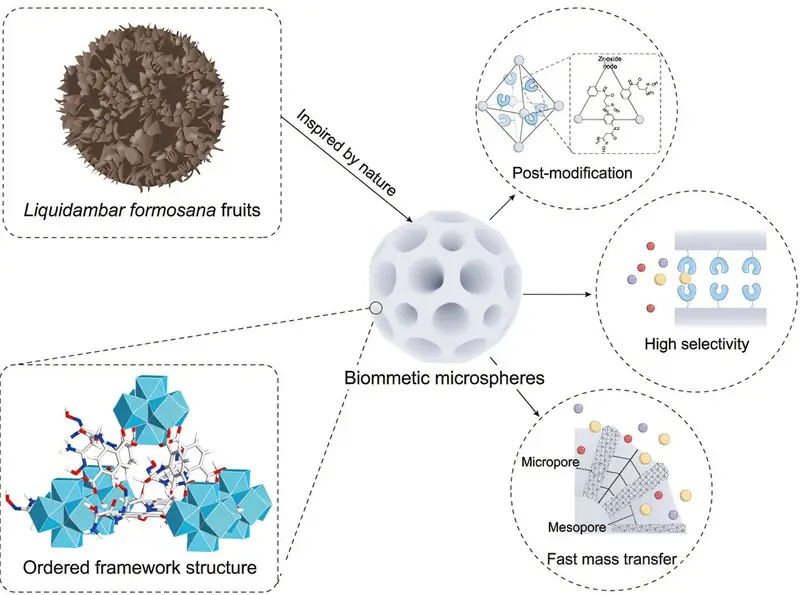The world’s oceans contain an estimated 4.5 billion metric tons of uranium—an amount that could fuel nuclear power plants for thousands of years. Unlike terrestrial uranium mining, which is resource-intensive and environmentally damaging, extracting uranium from seawater offers a potentially limitless and sustainable supply. However, there’s a catch: uranium in seawater exists in an extremely diluted form, at a concentration of just 3.3 micrograms per liter. This makes extraction a significant scientific and engineering challenge.
For decades, researchers have sought ways to efficiently capture uranium ions from seawater. The primary obstacle has been finding a method that combines high selectivity—ensuring only uranium is captured and not other abundant metals like vanadium and iron—with fast transport of uranium ions into the adsorbent material. Many traditional adsorbents suffer from structural limitations that slow down ion transport, reducing overall efficiency. Now, a pioneering study led by Professor Wen Liping of the Technical Institute of Physics and Chemistry at the Chinese Academy of Sciences has introduced an innovative biomimetic approach inspired by nature, offering a potential breakthrough in uranium extraction.
A Natural Solution to an Engineering Challenge
The research team looked to nature for inspiration, specifically at the Chinese sweetgum tree (Liquidambar formosana). This tree produces spiky, globular fruit with an intricate internal structure that facilitates the efficient movement of substances. Its unique design includes radial macropores and an interwoven lignin fiber network, allowing fluids and molecules to move from the surface to the core in just 0.3 seconds. This rapid transport capability provided a blueprint for a more effective uranium adsorbent.
Building on this natural design, the researchers developed a biomimetic spherical adsorbent with a hierarchical pore structure. By mimicking the sweetgum fruit’s radial macropores, they created pathways that prevent blockage and enhance the movement of uranium ions into the material’s interior. The result was a dramatic improvement in adsorption efficiency and uranium capture rates.
Overcoming Traditional Limitations
Current framework-based adsorbents use precisely engineered nanoscale “traps” designed to fit uranium ions. While this approach is effective in targeting uranium specifically, it often leads to steric hindrance—a phenomenon where ions get stuck due to spatial constraints. This self-blockage significantly reduces ion transport, slowing down the overall extraction process.
The new biomimetic adsorbent overcomes this issue by introducing a hierarchical network of pores that allows ions to move freely without obstruction. Experimental and theoretical studies showed that this structure significantly improved uranium diffusion, increasing adsorption capacity by an astonishing 213%. This improvement means more uranium can be captured in less time, making large-scale seawater extraction far more feasible.
Fine-Tuning Adsorption for Maximum Efficiency
A key finding of the study was that the size and density of the adsorbent’s pores could be precisely controlled by adjusting the soft-template used in synthesis. The researchers discovered that by optimizing the pore-wall thickness and spacing, they could fine-tune how uranium ions were captured and transported. This finding was confirmed through numerical simulations, which demonstrated how changes in structural parameters influenced adsorption efficiency.
In practical terms, this means that the material can be engineered to maximize uranium uptake while minimizing the capture of unwanted elements. This level of control is critical for making uranium extraction from seawater not only efficient but also economically viable.
Real-Seawater Testing Yields Promising Results
To validate their findings, the researchers tested the biomimetic adsorbent in real seawater conditions. The results were remarkable: the material exhibited exceptional selectivity for uranium, significantly outperforming conventional adsorbents. It effectively ignored competing ions such as vanadium and iron, achieving a 150% improvement in adsorption capacity compared to materials lacking hierarchical microstructures.
This breakthrough demonstrates that bio-inspired engineering can solve long-standing resource recovery challenges. The ability to selectively extract uranium from seawater at high efficiency could revolutionize the way the world sources nuclear fuel, potentially reducing dependence on environmentally destructive uranium mining and expanding the use of nuclear power as a clean energy source.
A Step Toward Sustainable Nuclear Energy
The development of this new biomimetic adsorbent represents a major step forward in uranium extraction technology. By leveraging nature’s design principles, researchers have created a solution that balances high selectivity with rapid ion transport—two critical factors that have long hindered the viability of seawater uranium harvesting.
Looking ahead, further research will be needed to scale up production of the adsorbent and refine its performance in large-scale marine environments. Scientists will also need to assess its long-term durability and regeneration potential to determine how efficiently it can be reused. If these challenges can be addressed, this technology could help unlock the vast uranium reserves of the ocean, paving the way for a more sustainable and secure energy future.
The Power of Nature-Inspired Innovation
The study led by Professor Wen Liping highlights the immense potential of biomimicry in solving complex engineering problems. By studying how nature efficiently transports and processes substances, scientists can develop advanced materials that outperform traditional synthetic designs.
As the demand for clean and sustainable energy grows, innovations like this will be crucial in unlocking new resources and making nuclear power a more viable long-term solution. By turning to the oceans—an untapped and virtually limitless uranium source—this research brings the world one step closer to energy security without the environmental costs of conventional mining.
Nature has provided the blueprint; now, science is turning it into reality.
Reference: Zhehua Zhang et al, Liquidambar formosana fruit-inspired hierarchical nano-trap framework for efficient uranium extraction from seawater, Matter (2025). DOI: 10.1016/j.matt.2025.102055
